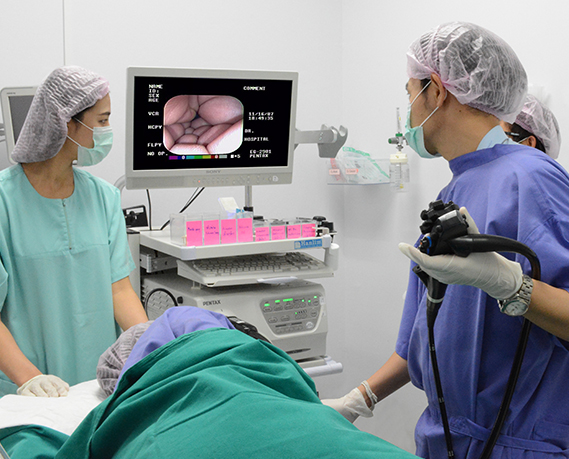As medical technology continues to evolve, few fields are experiencing as profound a transformation as gastroenterology. The integration of artificial intelligence (AI) into robotic endoscopy marks a significant leap forward in the diagnosis, monitoring, and treatment of gastrointestinal (GI) disorders. From improved precision during procedures to faster, more accurate detection of lesions, AI-powered robotic endoscopy promises to revolutionize how we approach GI health.
Gastrointestinal diseases, including colorectal cancer, inflammatory bowel diseases, ulcers, and various motility disorders, affect millions globally. Traditional endoscopic procedures, while effective, are highly dependent on the skills of the operator and can be subject to human error. The emergence of AI-driven robotic systems seeks to augment human capabilities, reduce diagnostic variability, and enable minimally invasive interventions with unprecedented efficiency and safety.
This article explores the current state, clinical benefits, technical challenges, ethical implications, and future prospects of AI-guided robotic endoscopy in gastroenterology. Whether you are a medical professional, a healthcare technologist, or simply a curious reader, you’ll find this comprehensive overview insightful and thought-provoking.
Understanding robotic endoscopy
Robotic endoscopy refers to the use of computer-assisted, remote-controlled devices to perform endoscopic examinations and interventions. Unlike traditional endoscopy, where manual control is the norm, robotic systems introduce enhanced precision, stability, and range of motion. When coupled with artificial intelligence, these systems can not only follow complex navigational paths but also detect abnormalities autonomously and make predictive suggestions to the operator.
The integration of AI typically involves deep learning algorithms trained on large datasets of endoscopic images. These algorithms can identify patterns, highlight anomalies, and differentiate between benign and malignant lesions with increasing accuracy. The result is a hybrid system where robotics handles the mechanical execution, and AI augments decision-making.
Clinical applications in gastroenterology
One of the most impactful applications of AI-powered robotic endoscopy is in colorectal cancer screening. Colonoscopy is the gold standard for detecting polyps and early-stage colorectal cancer, but studies have shown that adenoma detection rates (ADR) can vary significantly between operators. AI systems can highlight suspicious lesions in real time, thus reducing variability and improving ADR across the board.
In upper GI endoscopy, AI-assisted robots can help detect early signs of esophageal cancer, Barrett’s esophagus, and gastric ulcers. Capsule endoscopy, often used for small intestine imaging, benefits from AI by automating the review of thousands of images and flagging potential areas of concern.
Therapeutic applications are also on the rise. Robotic systems can assist in procedures such as endoscopic submucosal dissection (ESD), polypectomy, and even suturing. AI guidance ensures that these procedures are executed with higher precision and lower risk.
Technological architecture and components
AI-powered robotic endoscopy systems are composed of several key components:
- Robotic arm or navigation module: Provides mechanical stability and precise control.
- Endoscope with imaging sensors: High-resolution, sometimes multispectral, sensors capture detailed visuals.
- AI processing unit: Runs deep learning models trained to detect pathologies.
- User interface: Allows the physician to interact with the system, often with feedback mechanisms.
These systems are designed to be modular and adaptable to different procedural requirements. For instance, some robots are designed for natural orifice transluminal endoscopic surgery (NOTES), while others focus on standard diagnostic endoscopy.
Benefits for patients and healthcare systems
The benefits of AI-powered robotic endoscopy extend beyond improved diagnostic accuracy. For patients, these systems often mean:
- Shorter procedure times
- Less discomfort
- Lower complication rates
- Earlier detection of disease
For healthcare providers and systems, benefits include:
- Standardized quality across operators
- Reduced workload and fatigue for clinicians
- Enhanced training via AI-guided feedback
- Cost savings in the long term through early interventions
Challenges and limitations
Despite its promise, AI-powered robotic endoscopy faces several hurdles:
- High initial costs: Installation, training, and maintenance are expensive.
- Regulatory concerns: AI systems must meet stringent regulatory approvals.
- Data privacy: Handling sensitive patient data requires robust cybersecurity.
- Interoperability: Integrating with existing hospital systems can be complex.
- Bias in AI models: If training data is not diverse, AI may perform poorly on underrepresented groups.
These limitations underscore the need for continued research, ethical oversight, and inclusive data collection.
Ethical and legal considerations
The use of AI in medical decision-making raises important ethical questions. Who is responsible if an AI-guided procedure goes wrong—the physician, the developer, or the hospital? How transparent should AI decisions be? Should patients have the right to opt out of AI involvement?
Regulatory bodies are beginning to address these concerns. The European Union’s AI Act and the U.S. FDA’s evolving framework on Software as a Medical Device (SaMD) are shaping the legal landscape for AI in healthcare.
Future trends and innovations
Looking ahead, we can expect several exciting developments:
- Miniaturized robotics: Smaller, more flexible robots that can navigate complex GI anatomies.
- Real-time learning: Systems that improve continuously from ongoing procedures.
- Remote procedures: Tele-endoscopy performed by specialists from a distance.
- Integrated diagnostics: Combining endoscopy with genetic and microbiome data for holistic insights.
The convergence of AI, robotics, and data science will continue to drive innovation. Collaborative efforts between clinicians, engineers, data scientists, and ethicists will be key to ensuring that these technologies serve all patients equitably and effectively.
AI-powered robotic endoscopy represents a remarkable fusion of human ingenuity and technological advancement. While challenges remain, the trajectory is clear: smarter, safer, and more personalized gastrointestinal care.
Image(s) used in this article are either AI-generated or sourced from royalty-free platforms like Pixabay or Pexels.
Did you enjoy this article? Buy me a coffee!






